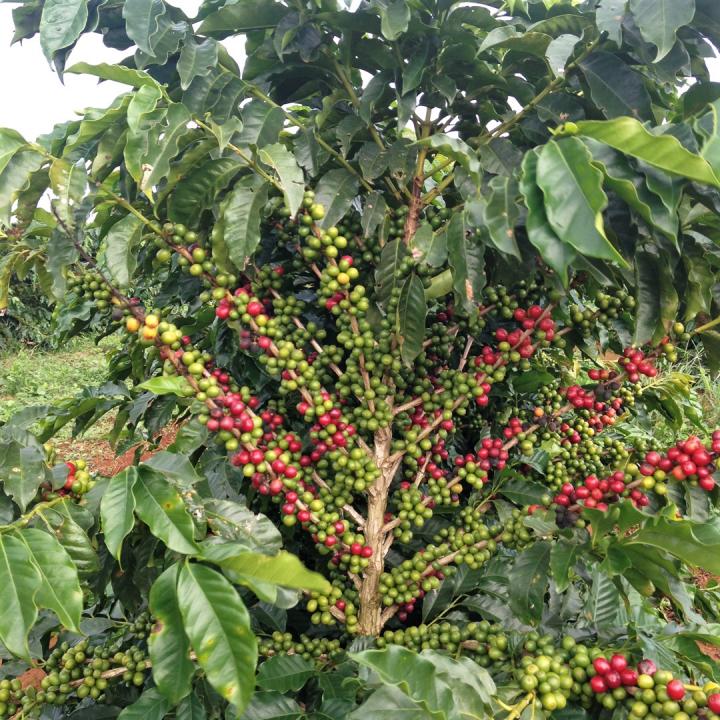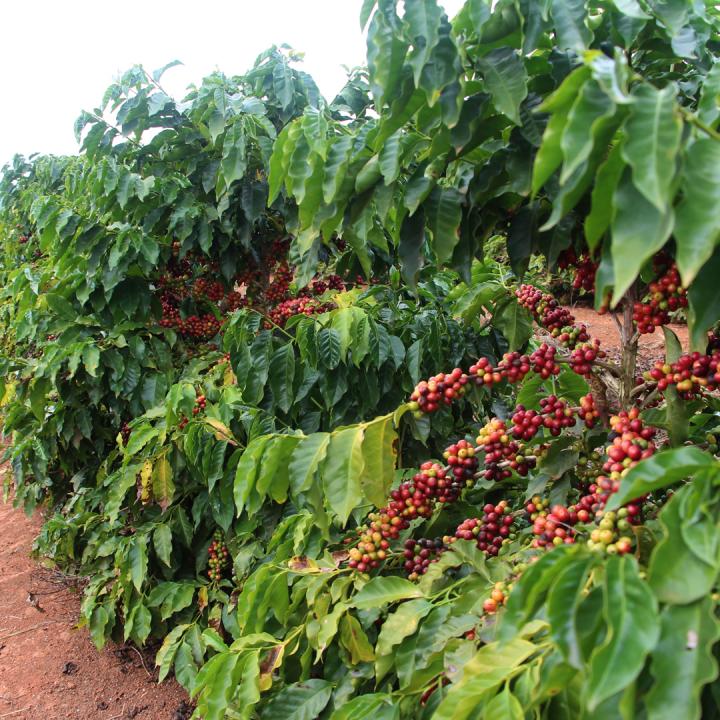
This coffee plant is the cultivar ‘Catigua’ in its high production year. Catigua is one of the most commercially grown cultivars in Brazil. Photo by César Elias Botelho. Used with permission.
The “biennial effect” in coffee — the idea that yields from coffee plants are naturally higher one year and lower the next due to a kind of physiological recovery — is often cited by agricultural and financial analysts as it relates to global coffee supply.
Yet it is also a hugely important factor for coffee farmers, those people whose annual income may be determined in large part by the volume produced in a given crop season.
Now researchers in Brazil, the largest coffee-producing country in the world, believe they have created a computational model that could revolutionize the coffee sector’s collective understanding of the biennial effect, while potentially better informing producers on what they might expect from specific coffee varieties and cultivars, down to the individual plant level.
“Ultimately, our findings could reduce the cost and time to launch a new coffee variety into the market by half,” Indalécio Cunha Vieira Júnior, a researcher at the Federal University of Lavras in Brazil, said in an announcement today.
Cunha is the lead author of the new report on the computational modeling that was published on May 30 in the journal Crop Science.
“The model generates data on biennial growth at the level of individual coffee plants,” Cunha said, adding that such focused data could allow coffee farmers to tailor their planting and cultivation strategies based on individual plant types in specific growing conditions.

The coffee bean cultivar ‘Aranas’ ready to be harvested. Photo by César Elias Botelho. Used with permission.
Culled in the Minas Gerais growing region of Brazil, the study challenges numerous assumptions about coffee’s biennial cycle, beginning with the idea that it may not be biennial at all.
“Many researchers assumed that all coffee plants in an area would have similar yield patterns,” said Cunha. However, the researchers found that some coffee plants maintained relatively stable yields over periods of years in a given location, while others had higher yields for two years followed by a year of lower yields.
Real data based on coffee yields was tested through the computer simulation to refine accuracy and identify difficulties in the computer modeling. Moving forward, the researchers are attempting to include more genetic information into the model to try to determine the genetic control over the biennial cycle.
The potential benefit of all this work is to provide farmers data that will allow them to pursue more uniform yields from year to year.
Said Cunha, “Simulation results showed the model could effectively determine individual biennial stages.”
Nick Brown
Nick Brown is the editor of Daily Coffee News by Roast Magazine.
Comment
1 Comment
Comments are closed.






Very technical paper – unfortunately it doesn’t throw light on the reason for Brazil’s biennial production. I understand why a field of trees of the same age may bear heavily one year and then lighter the next. But why does this effect persist across tens of thousands of fields that were planted at different times with different varieties?